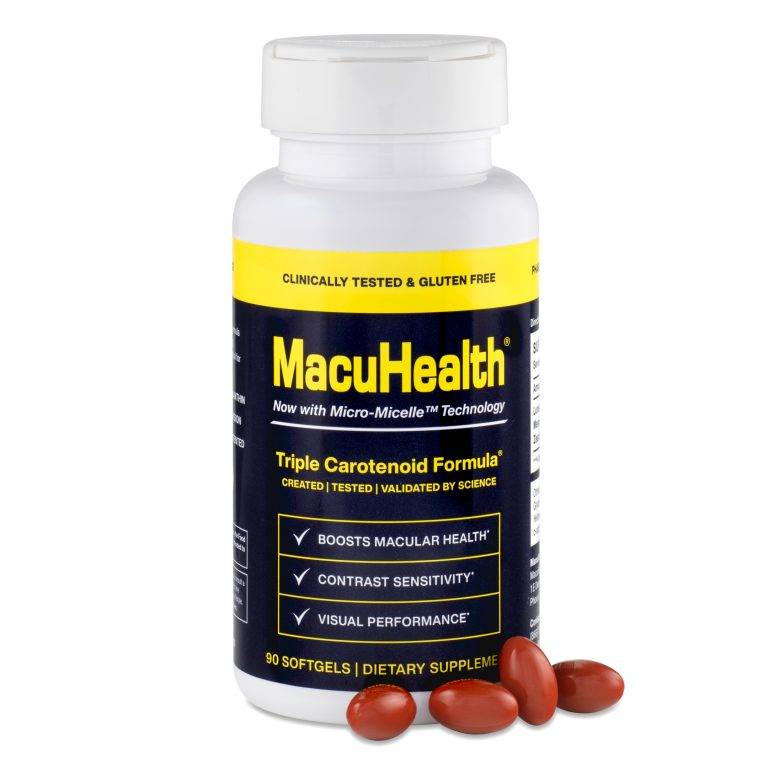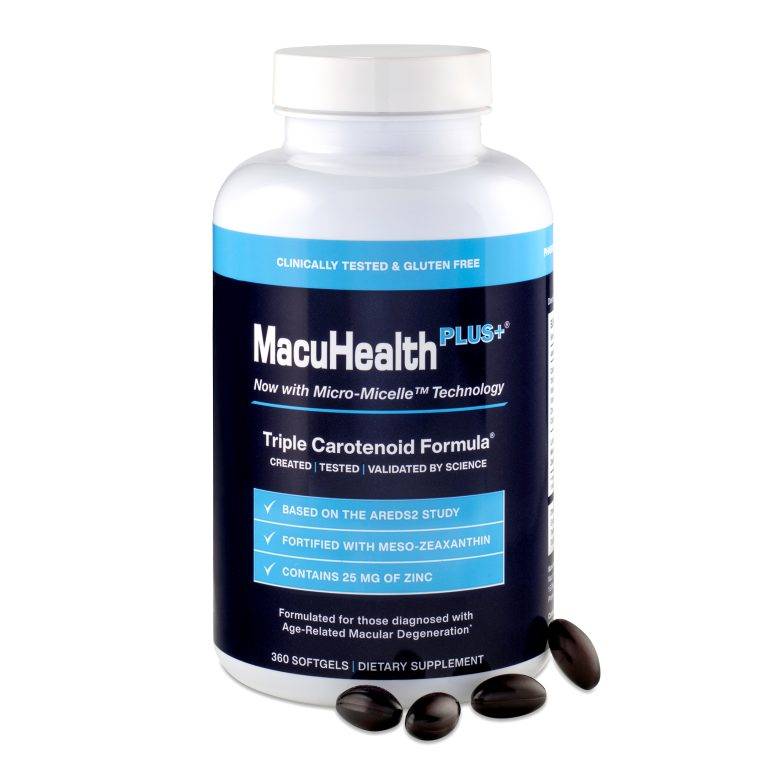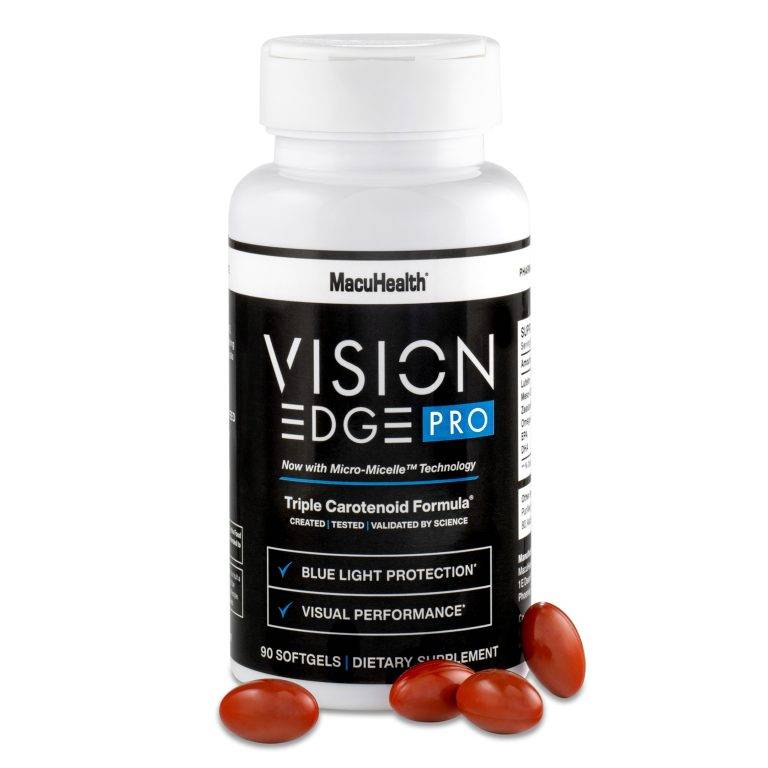SUBSCRIBE AND SAVE! | SIGN ME UP!

Written by MacuHealth
Reviewed by Jim Stringham, Ph.D.
Age-related macular degeneration (AMD) is characterized by the gradual loss of a person’s central vision. It remains the most common reason for vision loss in older adults, with more than 10 million people living with the condition in the U.S.
Central vision is served by a specialized region of the retina called the macula – hence the term macular degeneration. The loss of central vision caused by AMD is a type of retinal degenerative disease because the macula forms part of the retina. However, there are several forms of this disease, two of which are most common: “dry” AMD and “wet” AMD.
This guide covers what you need to know about macular degeneration, wet vs. dry AMD, symptoms, treatment, and prevention.
Degenerative retinal disease is a term for diseases afflicting the eye’s retina. Approximately 51.26% of people aged 60 to 69 will experience some form of retinal disease, with the rate rising through the age groups.
AMD causes issues with the macula at the retina’s center. Problems with the macula leave you with peripheral vision but disrupted central vision. All forms of AMD cause the cells beneath the macula to degrade.
Let’s discuss wet vs. dry AMD, including symptoms and treatment options.
Wet AMD, also known as exudative AMD, occurs in the late stages of the disease. It’s the least common form of AMD, with 15% of all diagnosed cases being exudative.
Atypical blood vessels will appear around the retina and macula. These blood vessels will begin to leak fats and proteins, which can lead to scarring. Without urgent treatment, bleeding behind the eye in elderly patients can lead to a dramatic and permanent loss of vision.
Wet AMD can cause severe problems with your vision. It is not uncommon for straight lines to appear crooked, wavy, or warped. Some other symptoms of wet AMD include:
Treatments exist for wet AMD to prevent further vision loss. These treatments are designed to lower the number of irregular blood vessels in the eyes. Note that none of these treatments can reverse any of the damage caused.
There are two approved solutions for wet AMD, including:
Most people with diagnosed AMD have the dry version. Dry AMD makes up 85-90% of all diagnosed AMD cases. With the early, dry form of AMD, there is less retinal damage and, therefore, less vision loss.
Dry AMD is marked by deposits of clumped debris in the retina called drusen. Waste products from the retina’s cells make up these yellow deposits; drusen can clog the pathways that otherwise would nourish the visual cells in the retina and carry away waste products.
Symptoms
Dry macular degeneration shares many of the same symptoms as wet AMD – it is, therefore, crucial to see an eye care professional annually in order to catch the disease at the earliest possible stage.
Symptoms include blank spots, perceiving straight lines as warped, problems seeing in low lighting, and problematic central vision. However, symptoms vary in severity based on how advanced AMD is.
There are some differences between wet AMD vs. dry AMD treatment. Scientists are exploring potential ways to halt the progression of dry AMD and prevent the onset of later-stage disease. Studies of specific nutrients to support the health of the retina have yielded very promising results. Other studies have characterized some benefits from the use of stem cells and pharmaceutical agents.
In the meantime, preventative steps, such as living a healthy lifestyle, can significantly reduce your risk of dry AMD. Also, the importance of scheduling regular eye exams to catch early problems cannot be overstated. Your eye doctor is an expert at catching subtle changes that may signal a cause for concern. The earlier AMD is caught, the better the outcome.
Both dry and wet AMD originate from damaged cells underneath the retina. Adopting strategies to protect your eyes can reduce your risk of experiencing AMD. While there is no way to reduce your risk to zero, healthier people are less likely to experience the condition.
Macular degeneration prevention begins with your lifestyle. As spelled out in some detail below, you can take substantial steps today to preserve your vision for the future.
Smoking is one of the leading causes of sight problems later in life, as well as a host of other conditions. Quitting smoking as early as possible can prevent further eye damage and produce a regenerative effect on the rest of your body.
Your eyes need proper nutrition for proper health and maintenance. Keep your eyes in good working order by eating a balanced diet filled with vitamins, minerals, and antioxidants.
Think about what you eat and incorporate more fruits, vegetables, nuts, and fish oil into your diet. Reducing your greasy, fatty food intake is also helpful.
Doctors recommend a diet with green vegetables such as kale and spinach. They’re rich in antioxidants known as carotenoids. But modern farming conditions have caused a decrease in the nutritional value of food. Now the average American consumes 1/20th of the recommended amount each day. This isn’t enough to improve visual performance and manage AMD progression.
Thankfully, supplementation is a viable way to replenish macular carotenoids. Studies show that supplements containing all three macular carotenoids – Lutein, Zeaxanthin and Meso-Zeaxanthin – boost macular pigment; a dense macular pigment layer significantly improves the health and performance of the retina. Taking a high-quality supplement like MacuHealth is an excellent way to ensure that the body receives the proper amount of carotenoids needed to support visual health and performance.
Catching the signs of AMD enables you to take preventative steps.
Dry AMD progresses in stages, meaning that you may not have any symptoms during the early and intermediate stages.
While wet AMD tends to have more profound symptoms, regular eye appointments can help your doctor spot the warning signs.
Early diagnosis can allow you to enjoy healthy vision for longer and take positive steps to slow the onset of this degenerative eye disease.
Understanding macular degeneration and wet vs. dry AMD symptoms is essential for taking action to preserve your vision as you age.
MacuHealth’s patented formula is the supplement that doctors choose to improve the health of the retina, leading to better visual performance and protection from AMD.
To learn more about eye vitamins for macular degeneration and how to preserve your vision, shop now with MacuHealth.

Formulated by scientists and clinically proven to support eye health for both healthy and diseased eyes.

Based on the AREDS2 formula with 10 mg of Meso-Zeaxanthin and reduced levels of zinc for the ultimate defense against AMD.

Created for those wanting to protect against blue light and improve visual performance for everyday maintenance.

Sourced from small, open-water catch fish from the coast of Chile, TG Omega-3 provides customized dosing for patient specific needs.